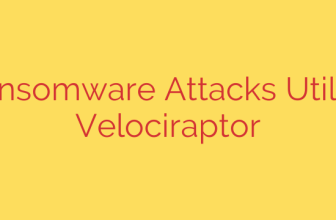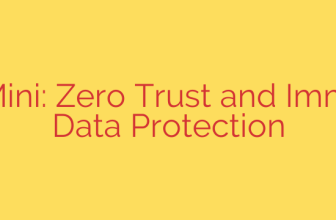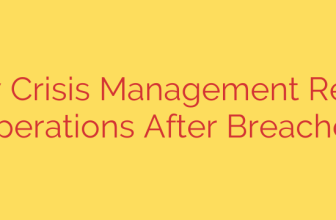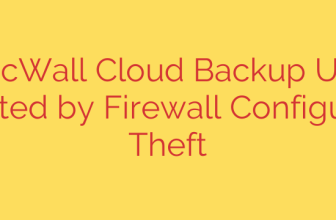
The Future of Cybersecurity: Navigating AI, Quantum Computing, and Geopolitical Threats
The digital landscape is evolving at a breathtaking pace, but with new opportunities come new, more complex threats. Today’s cybersecurity challenges extend far beyond simple viruses and phishing scams. We are entering a new era defined by three powerful forces: the rise of Artificial Intelligence, the looming potential of quantum computing, and the escalating tensions of global geopolitics. Understanding these interconnected challenges is the first step toward building a truly resilient defense.
The AI Arms Race: A Double-Edged Sword
Artificial intelligence is no longer science fiction; it’s a powerful tool being actively used by both attackers and defenders. This has created a high-stakes “AI arms race” where the advantage can shift in an instant.
On one hand, cybercriminals are leveraging AI to launch devastatingly effective attacks. Imagine AI-powered phishing campaigns that perfectly mimic the writing style of a CEO or polymorphic malware that constantly changes its code to evade detection. These tools allow attackers to automate and scale their operations, probing for weaknesses with a speed and sophistication that human teams struggle to match.
On the other hand, AI is also our most powerful defensive weapon. Modern security platforms use machine learning algorithms to analyze trillions of data points in real time, identifying subtle anomalies that signal a breach. AI-driven security can predict potential attack vectors, automate incident response, and hunt for threats proactively. The key takeaway is that fighting AI-powered threats requires an AI-powered defense; organizations that fail to adopt these advanced tools will be left dangerously exposed.
The Quantum Countdown: Preparing for a Post-Cryptography World
While AI is a present-day challenge, quantum computing represents a future-altering threat to the very foundation of our digital security: encryption.
Today, most of our sensitive data—from financial transactions to government secrets—is protected by public-key cryptography standards like RSA and ECC. These methods are secure because even the world’s fastest supercomputers would take millions of years to break them. A powerful quantum computer, however, could break them in a matter of hours or even minutes.
This has led to the urgent threat of “Harvest Now, Decrypt Later” attacks. Malicious actors, including nation-states, are actively stealing vast amounts of encrypted data today. They cannot read it yet, but they are stockpiling it with the expectation that they will be able to decrypt it all once a sufficiently powerful quantum computer is built.
The solution is a transition to Post-Quantum Cryptography (PQC)—new encryption algorithms designed to be secure against both classical and quantum computers. While this transition will be a monumental effort, organizations must start preparing now.
Actionable Steps for Quantum Readiness:
- Create a Cryptographic Inventory: Understand what data you have, where it is, and how it is currently encrypted.
- Stay Informed: Follow the progress of standards bodies like the National Institute of Standards and Technology (NIST) as they finalize PQC standards.
- Develop a Migration Plan: Begin planning the long-term process of upgrading your systems to quantum-resistant algorithms.
The New Battlefield: Geopolitics and State-Sponsored Cyber Warfare
Cyberattacks are no longer just the domain of criminals seeking financial gain. They have become a primary tool of statecraft, used for espionage, sabotage, and information warfare. The digital world is now a recognized battlefield where geopolitical conflicts play out daily.
Nation-states are increasingly targeting the critical infrastructure of their adversaries, including power grids, financial systems, and water supplies. These attacks are designed to cause widespread disruption and destabilize societies. Furthermore, the lines are blurring between state-sponsored hackers, patriotic hacktivist groups, and organized cybercrime syndicates, creating a complex and unpredictable threat environment.
Unlike traditional warfare, there are few established international norms or “rules of engagement” for cyber conflict. This ambiguity creates a volatile atmosphere where miscalculation and escalation are constant risks. In our interconnected world, an attack on one nation’s supply chain or financial sector can have immediate, cascading effects across the globe.
Building Resilience in a New Era of Threats
The convergence of AI, quantum computing, and geopolitics demands a more proactive and intelligent approach to cybersecurity. Standing still is not an option. To protect your organization, you must adopt a forward-looking security posture.
Embrace a Zero-Trust Architecture: In this new environment, the old model of a secure perimeter is obsolete. A “zero trust” model operates on the principle of “never trust, always verify,” requiring strict identity verification for every person and device trying to access resources on a network, regardless of whether they are inside or outside the network perimeter.
Invest in AI-Powered Defense: You must fight fire with fire. Deploying security solutions that leverage AI and machine learning is essential for detecting and responding to sophisticated, automated threats at machine speed.
Begin Your Quantum Readiness Journey: Do not wait for “Q-Day.” The time to start preparing for the post-quantum world is now. Identifying your most critical data and developing a PQC migration strategy is a crucial first step.
Enhance Geopolitical Threat Intelligence: Understanding the global political landscape is now a part of cybersecurity. Knowing which nation-state actors might be targeting your industry or country can help you anticipate threats and tailor your defenses accordingly.
The challenges ahead are significant, but they are not insurmountable. By understanding the evolving threat landscape and taking decisive, proactive steps, we can build the resilience needed to secure our digital future.
Source: https://www.helpnetsecurity.com/2025/10/07/pwc-global-cyber-risk-trends-2026/








